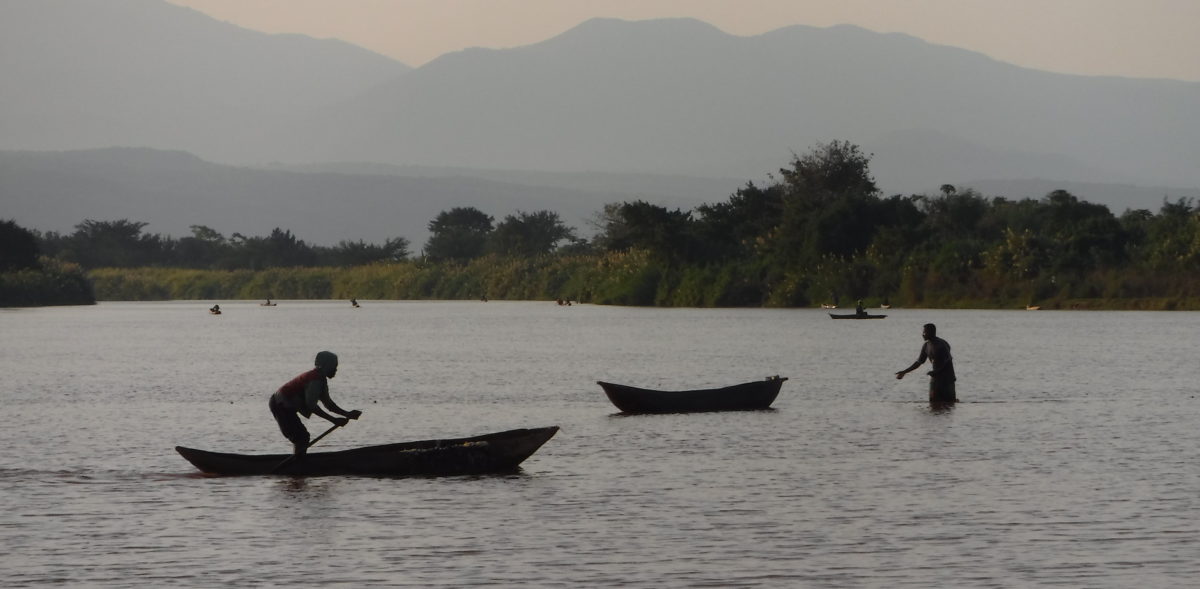SEATTLE, Washington – 15 November 2017 – The JRS Biodiversity Foundation today announced a new $264,100 grant to develop methods for mapping the distribution of both native and non-native tilapia in East Africa. The project will be led by Bangor University professor Dr. George Turner, a biologist with over 30 years experience studying African cichlids.
East Africa is the major hotspot for diversity of native Oreochromis, the genus that dominates the $5 billion global tilapia farming industry. These unique populations may contain genes for disease resistance or tolerance of environmental extremes (e.g. salinity or temperature) useful in aquaculture. However, native tilapia are threatened by invasive exotic tilapia strains stocked from fish farms, which often outcompete native strains or genetically swamp them via hybridization. Pure native strains may be lost soon after an invasion, and recent surveys have indicated that exotics are now found in many water bodies in Tanzania. Assessing or ameliorating the threat has been hampered by lack of species identification capacity and difficulty in archiving and accessing distribution data. Better characterization of East African native tilapia species distribution and population status is necessary to create effective policy or legislation aimed at their protection.

This project aims to facilitate identification and mapping of distributions for remaining populations of native tilapias in Kenya and Tanzania using TilapiaMap, a smartphone application developed by software company Geosho for Bangor University and the Tanzania Fisheries Research Institute. The team will build links between fish biology researchers and biological database managers, develop sustainable data management plans, and build capacity in the archiving and analysis of data through local and global platforms. The team anticipates that the newly available data will inform policy on zonation of strains used in aquaculture and on importation and distribution of non‐native species, ultimately helping to preserve the genetic diversity of Kenya and Tanzania’s native tilapia.
The JRS Biodiversity Foundation is the only conservation donor dedicated to increasing access to biodiversity data and information in sub-Saharan Africa. Mobile technologies that allow for rapid data collection, efficient quality control, and moderate technical expertise are key to unlocking knowledge of Africa’s biodiversity. Bangor University’s TilapiaMap is one of two recently funded JRS projects, in addition to the Okavango Fisheries Monitoring program, that use customized mobile biodiversity data platforms for fisheries monitoring and management.
See “Bangor University (2017) – Conservation of Native Tilapia”
About the JRS Biodiversity Foundation – The mission of the JRS Biodiversity Foundation is to enhance knowledge and promote the understanding of biological diversity for the benefit and sustainability of life on earth. Founded in 2004, the JRS Biodiversity Foundation supports biodiversity data and knowledge tools that are used to preserve biodiversity in developing economies where biodiversity is most threatened. The foundation has awarded $16M in grants since 2007. Visit online at https://jrsbiodiversity.org.
About Bangor University – Founded in 1884, Bangor University is an established centre of excellence for research and teaching, regularly appearing in global lists of the top 500 universities. It has a longstanding record of carrying out research projects on an international scale including Africa and Madagascar. Major relevant research strengths include freshwater and marine fish biology, aquaculture and fisheries, conservation biology and fisheries genetics. Visit online at https://www.bangor.ac.uk/.
Click here to download this announcement.
JRS Contact: Don S. Doering, Executive Director, ddoering@jrsbiodiversity.org
Bangor Contact: George Turner, Professor, bss608@bangor.ac.uk

